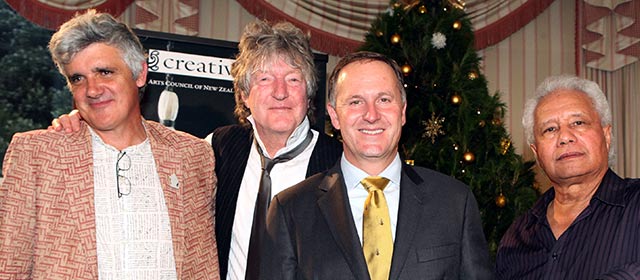Story summary
19th century
In the 1800s most Pākehā New Zealanders saw themselves as British, and it took a while for them to develop their own art and literature. Various magazines were started to publish New Zealand writing, but they usually did not last long.
Poet Alfred Domett wrote poems set in New Zealand, including his epic Ranolf and Amohia (1872). Both literature and painting tended to emphasise the beauty of the New Zealand landscape.
‘Maoriland’ art
The New Zealand Literary and Historical Association was set up in 1899 to promote New Zealand writing. The first anthology of New Zealand poetry was published in 1906.
As well as the New Zealand landscape, some artists and writers found inspiration in Māori stories and traditions, though they were generally used in superficial ways.
Cultural nationalism, 1930s to 1970s
In the 1930s a new generation of writers and artists wanted to create a national culture based on the real experience of being in New Zealand, rather than an idealised or romanticised one. Major figures in this cultural nationalist movement were poets Allen Curnow and Denis Glover, and prose writer Frank Sargeson. There were also painters, historians, musicians and critics. They started magazines, published books, and edited anthologies. The cultural nationalists had little interest in Māori culture, were mostly men and tended to be sexist.
National support for arts
The government has supported the arts since 1947 through the New Zealand Literary Fund and its successors, including Creative New Zealand (since 1994) and the Film Commission (since 1978). The government has also used the arts to promote the country overseas, and to visitors in New Zealand.
Since the 1960s various awards have been established for artists. Some, such as the Prime Ministers Awards for Literary Achievement, are run by the government, while others, such as the Arts Foundation laureate scheme, are funded by private organisations.
Artists who are successful overseas tend to be celebrated more than those who are only known in New Zealand.
Artists reject nationalism
Later artists such as poet James K. Baxter were critical of the cultural nationalists, seeing them as having a narrow idea of what art should be about. The works of Māori such as artist Ralph Hōtere and writer Witi Ihimaera criticised the narrow Pākehā view of New Zealand, and highlighted the experiences of Māori. Feminism in the 1970s encourage women artists to challenge the patriarchal assumptions of nationalism in their art. From the late 1960s more artists also looked to overseas art for inspiration, and the increasing globalisation of culture meant that many artists did not see it as their role to reflect New Zealand culture.





